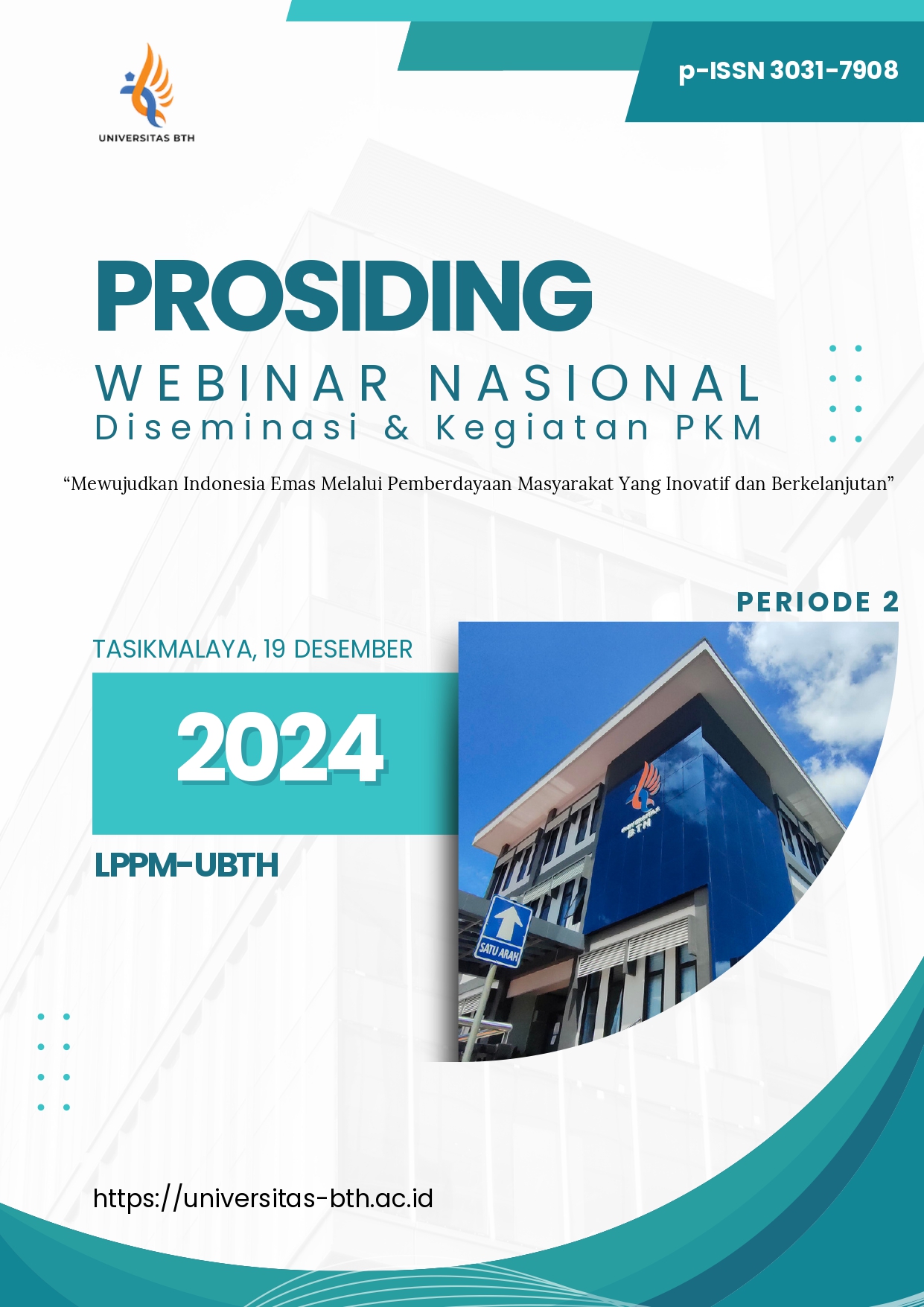MY HEART, MY FUTURE: EDUKASI GAYA HIDUP SEHAT UNTUK REMAJA BEBAS RISIKO PENYAKIT KARDIOVASKULAR
Keywords:
adolescent health, cardiovascular diseases, education, healthy lifestyle, my heart approachAbstract
Cardiovascular diseases (CVDs) are the leading cause of death globally, including in Indonesia, with unhealthy lifestyles as the primary risk factor often beginning during adolescence. This community service program aims to raise awareness among adolescents about CVD prevention through the My Heart approach (Manage Your Nutrition, Healthy Habits, Exercise Regularly, Avoid Risk Factors, Relax Mindfully, Think Positively). The program was conducted at SMA Negeri 9 Tasikmalaya, involving 162 twelfth-grade students. The methods included interactive education using visual media, direct counseling, and knowledge assessment through pretest and posttest. The results showed an increase
in the average knowledge score from 84.2 to 94.1 after the education session. Most participants exhibited low physical activity levels, frequent junk food consumption, insufficient intake of fruits and vegetables, with some engaging in smoking habits and often experiencing stress. The My Heart education approach effectively improved students' knowledge and awareness of healthy lifestyles. This approach is expected to be widely implemented to foster a healthier young generation and reduce the prevalence of CVDs in the future.
References
Abrignani, M.G. and Luca, F. (2019) ‘Lifestyles and Cardiovascular Prevention in Childhood and Adolescence’, Pediatric Cardiology Journal, 40, pp. 1113–1125. Available at:
https://link.springer.com/article/10.1007/s00246-019-02152-w.
Bailey, C. et al (2022) ‘Effectiveness of holistic lifestyle education in reducing cardiovascular risks among adolescents: A systematic review’, Journal of Adolescent Health, 70(4), pp. 543–550.
CDC (2024) ‘Physical Activity Facts’, CDC Healthy School [Preprint]. European Society of Cardiology (2022) Most high blood pressure in children and teenagers is linked with
unhealthy lifestyle, ESC Press Office.
Garcia-Hermoso, A. and et al. (2021) ‘Sedentary behavior and health outcomes in children and adolescents: A systematic review’, Journal of Pediatrics, 93(2), pp. 154–162.
Kemenkes RI (2020) Hasil Utama Riset Kesehatan Dasar 2020. Jakarta.
Kolber, M.R. and Scrimshaw, C. (2014) ‘Family history of cardiovascular disease’, Canadian Family Physician, 60.
Lin, H. et al. (2024) ‘A meta-analysis of the relationship between social support and physical activity in adolescents: the mediating role of self-efficacy’, Frontiers in Psychology, 14. Available at: https://doi.org/https://doi.org/10.3389/fpsyg.2023.1305425.
Malik, V.S. et al. (2020) ‘Sugar-sweetened beverages and risk of cardiovascular disease’, Circulation, 141(3), pp. 221–232.
Marques-Vidal, P. (2023) ‘Cardiovascular prevention in young: the healthy eightfold path’, European Journal of Preventive Cardiology, 30(592). Available at : https://doi.org/https://doi.org/10.1093/eurjpc/zwad051.
Sack, F.M., Lichtenstein, A.H. and Wu, J.H.. (2017) ‘Dietary Fats and Cardiovascular Disease A Presidential Advisory From the American Heart Association’, Circulation, 136, pp. e1–e23. Available at: https://www.ahajournals.org/doi/pdf/10.1161/cir.0000000000000510.
Shrestha, R. and Copenhaver, M. (2015) ‘Long-Term Effects of Childhood Risk Factors on Cardiovascular Health During Adulthood’, Clin Med Rev Vasc Health, 7.
World Health Organization (WHO) (2020) Guidelines on physical activity and sedentary behaviour, World Health Organization.
World Health Organization (WHO) (2021a) Cardiovascular diseases (CVDs), World Health Organization.World Health Organization (WHO) (2021b) Physical activity fact sheet.
World Health Organization (WHO) (2021c) Youth and tobacco: Protecting the next generation, World Health Organization.
World Health Organization (WHO) (2022) Global Status Report on Physical Activity 2022.

